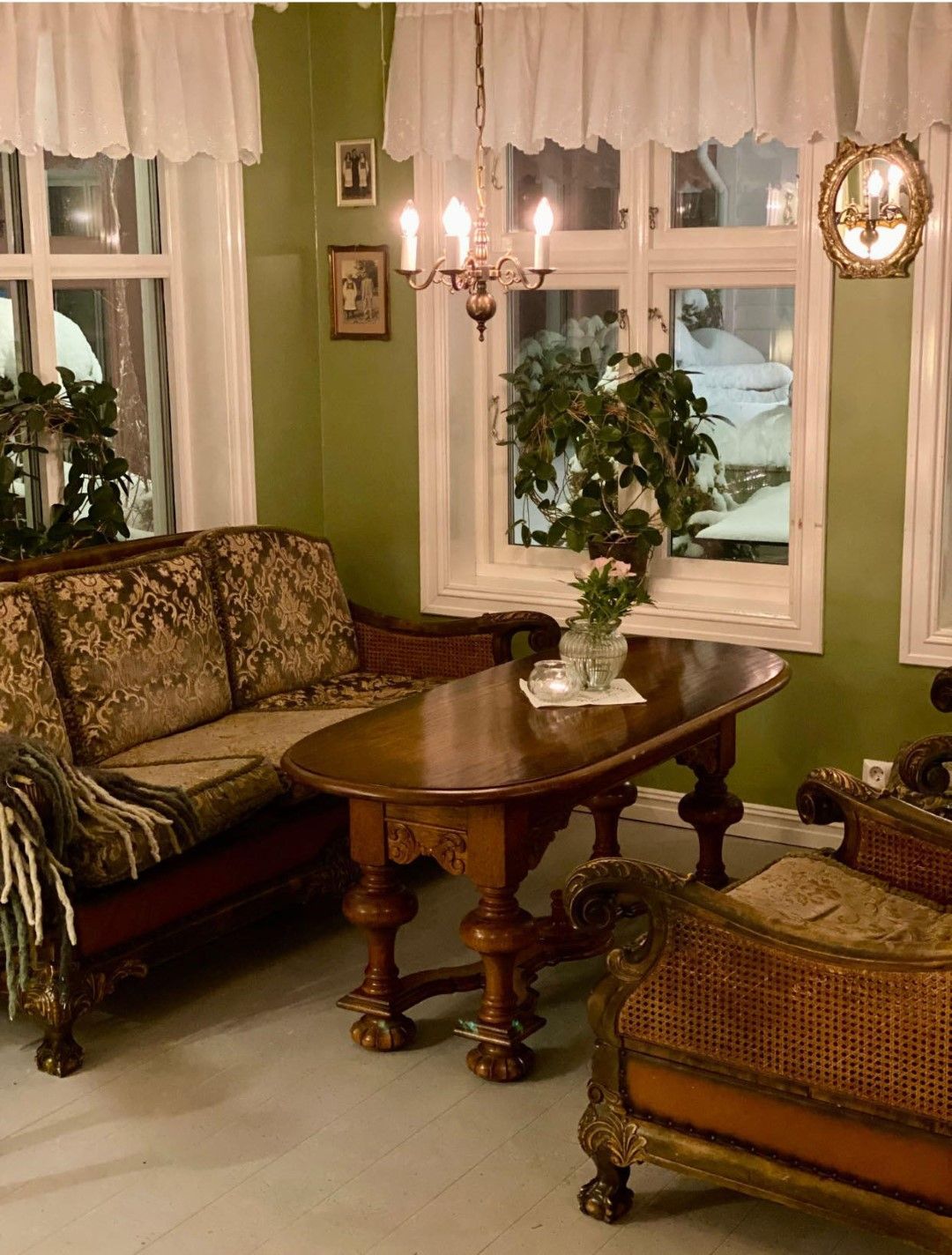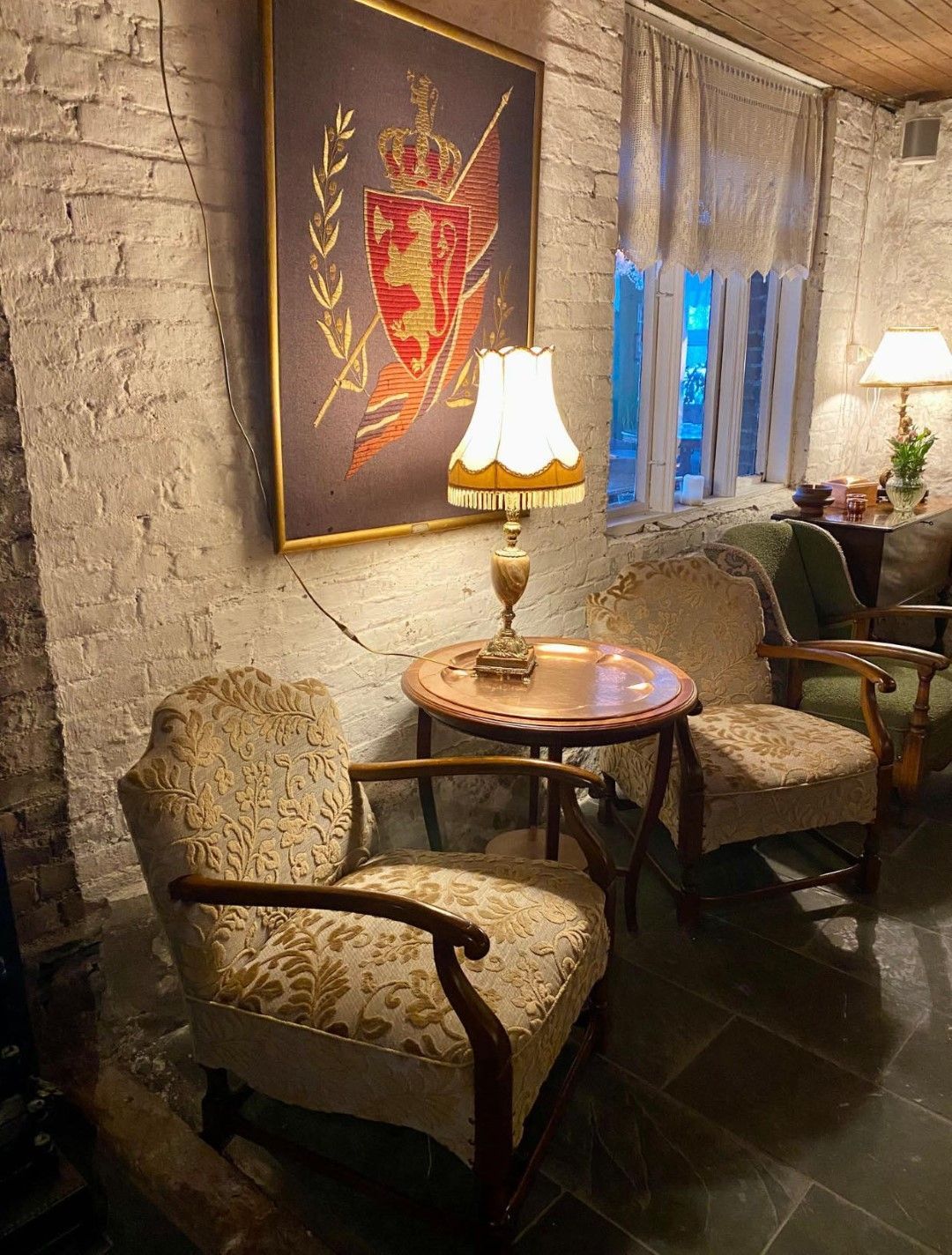Knag furniture at Haaheim
Haaheim has a large collection of Knag furniture, the beautiful handcrafted furniture from Bergen.

History
Christopher Knag established himself as a cabinetmaker in Bergen in 1878. In a small workshop at Kroken 3 in Dreggen. At that time, he only had NOK 60 in starting capital, and had to start up with a rented planing bench. At the end of the 19th century, there were around 45 carpentry and furniture shops in Bergen, so there were many competitors. Knag quickly gained a good reputation as a skilled carpenter. This gave him the opportunity to make apprentices, and subsequently apprentices. The premises were too small, and he had to look for a new place of his own, in Skostredet 1. Here there was enough space for the business to grow. After 25 years, in 1909, the premises were once again too small, and he found a larger premises in Domkirkegaten 6, and the business remained there. The first few years went rather poorly, but it was rumored that he delivered excellent quality craftsmanship. Therefore, it didn't take long before the company picked up. Knag's production was aimed mostly at a growing middle class. Gradually, he also got customers from the middle class, who previously preferred to source their furniture from abroad. Some customers liked to order a set of furniture for an entire room, then all the furniture got a wholesome style. The style could vary from simple empire to a more bulging rococo. Knag made furniture in the style the customer desired, he was happy to make several drafts that the customer could choose from. Knag placed great emphasis on quality, construction and stylish furniture, which is why Knagmøbler also gained a good reputation as quality furniture, both at home and abroad. The orders came not only from Bergen, but also from the rest of the country and from a number of other countries. Knag was also particularly well-known for his works in intarsia, pictures in wood embedded in furniture surfaces. Today, Knag furniture is seen as family heirlooms and collectibles. At most there were around 60 employees at Chr. Knag, there were carpenters, turners, wood cutters, upholsterers, office staff, journeymen, apprentices and a driver. The Knag furniture is mostly designed by either Christoffer, Johan - eldest son who was actually supposed to take over the business, but died at a young age - or Alf, but they were not always involved in the actual production of the furniture. In 1932 the company opened a branch in Oslo, Chr. Knag AS in Arbinsgate 1 Here they accepted orders for furniture which were then made in Bergen and shipped to Oslo. Over time, this proved to be expensive in terms of administration and transport. In 1938, a sales branch was also established in Bergen, Interiørkunst AS in Starvhusgaten. Furniture fabrics, carpets, curtains, art and interior objects, lamps etc. were sold here. When the Second World War broke out, the company had built up a large inventory. When the border was closed to imports, this warehouse was of great value to the operation of Chr. Knag. The warehouse was gradually emptied, also of the out-of-date goods. Then emergency goods and replacement materials had to be used. In the first post-war years, things went well for the company, but gradually as factory-produced furniture became more affordable and the workers' wages rose, things went worse for Chr. Knag. As a result of bad times, the Oslo branch, which was expensive to operate, was sold in 1954. Employees at the workshop were gradually reduced to a minimum. Around 1967, Interiørkunst AS was separated from Chr. Knag and taken over by Alf Knag's son, Finn Knag. It became increasingly difficult to sell quality handmade furniture to customers who wanted cheaper furniture. When Alf Knag died in 1975, it was the end of the company Chr. Knag, which had then produced furniture for 97 years. The stately furniture lives on with collectors, in various museums and the hotel, or as treasured family heirlooms. We are proud to take care of the rich heritage from these wonderful handcrafted furniture. Most of the rooms at Haaheim are furnished with these beautiful pieces of furniture. Me often goes on historical walks and tells about the unique furniture history of Knag. A visit to Haaheim is a journey through bygone times.














